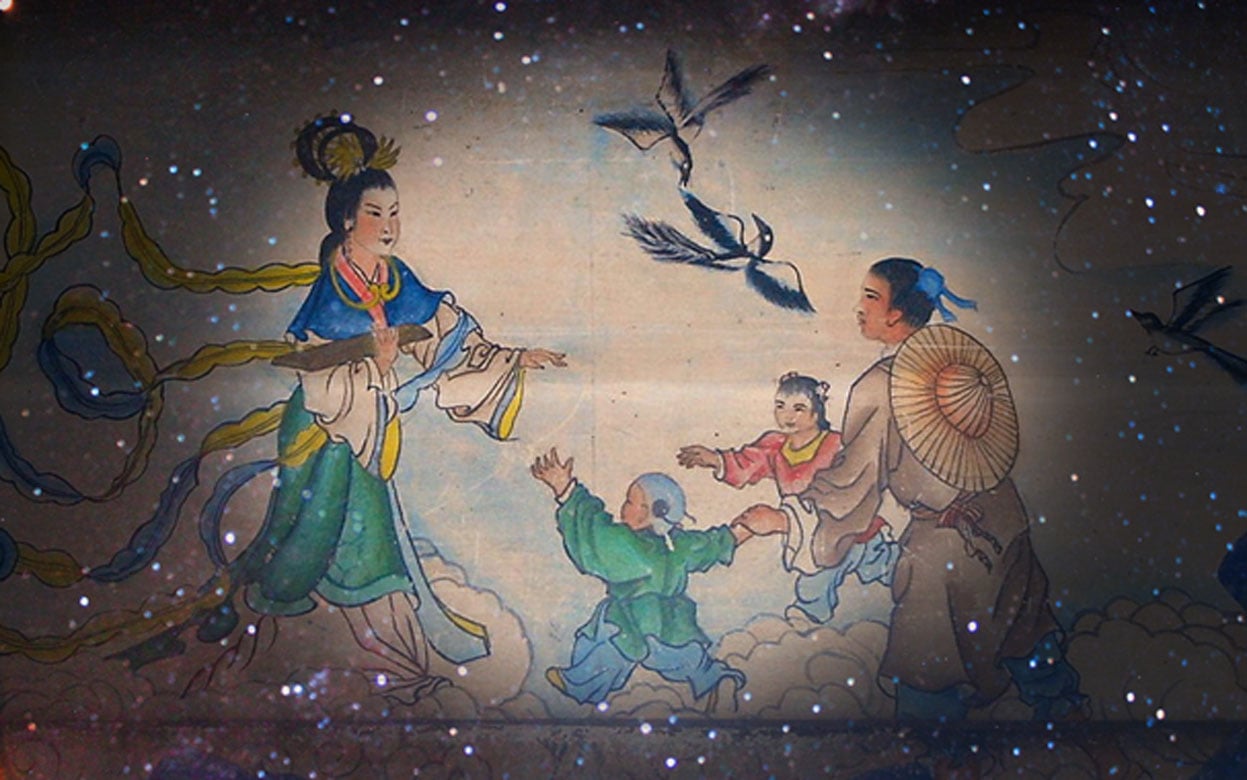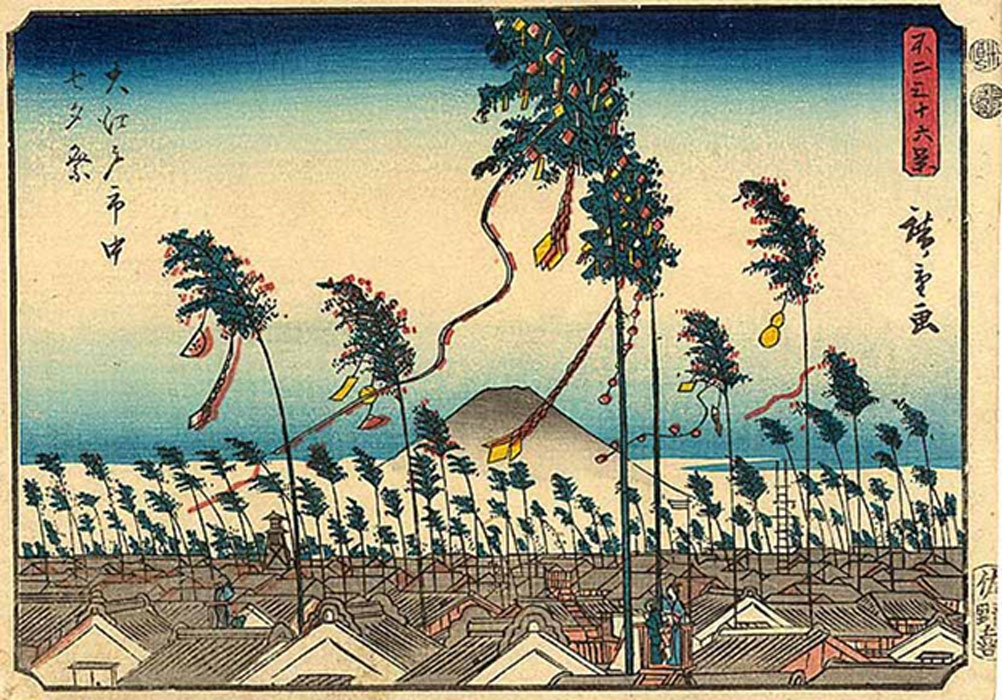
The Cowherd and the Weaver Girl: An Ancient Celestial Legend of Star-Crossed Lovers in the Sky
China’s traditional Qixi (“Double Sevens”) Festival has been celebrated for at least 2000 years. Since the Han Dynasty (206 BC – 220 CE), on the seventh night of the seventh month, young women would work with needle and thread in the moonlight and pray for a good marriage in the future. After an incense burning ceremony, they would then gaze at the night sky for the two stars, Vega and Altair, which are separated by the vast expanse of whiteness of the Milky Way, and make their wishes as children picked wild flowers and hung them around horns of oxen.
In Japan, the annual meeting between the two stars is equally celebrated as the Tanabata (“Weaving Princess”) Festival. Traditionally, a bamboo plant would be brought into the house, and a picture of the two stars would be hung upon it. The Altair star is represented as a farmer leading a cow, and the Vega star is a princess with a loom.

Japanese woodblock print of Tanabata festivities in Edo (Tokyo), 1852. (Public Domain)





